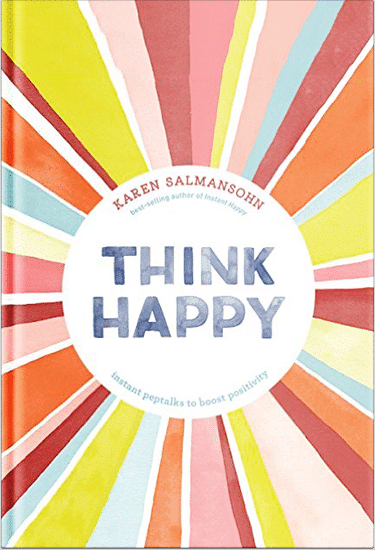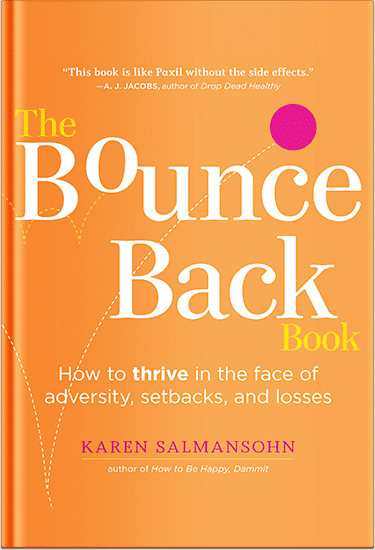 If you’re struggling with intrusive, stressful thoughts, you will benefit from knowing these Cognitive Defusion Techniques – which are actually simple and fun to use.
If you’re struggling with intrusive, stressful thoughts, you will benefit from knowing these Cognitive Defusion Techniques – which are actually simple and fun to use.
Do you find yourself lying in bed – or sitting at your desk – and your mind is racing like it’s in the final lap of the Indy 500. Thoughts, doubts, fears, and hypothetical scenarios are doing the cha-cha in your brain.
- “What if I fail?”
- “I should have said this instead.”
- “Why can’t I be better?”
Sound familiar? Welcome to the club of overthinkers, worriers, and second-guessers.
It’s a big club. Too big, if you ask me. But here’s the good news: There’s a way out of this mental maze – with the help of a practical tool called Cognitive Defusion.
I’m writing about the benefits of Cognitive Defusion because I’m a leading Behavioral Change Expert, the bestselling author “Think Happy” and founder of The Anxiety Cure Course – which is a therapist-recommended online program.
I’ve spent years diving deep into the human mind, understanding how it works, and more importantly, how it can work better!
Today, I’m excited to share one of my favorite tools for reducing intrusive, stressful thoughts: Cognitive Defusion.
What is Cognitive Defusion?
 Now, let’s get to the heart of the matter: What exactly is Cognitive Defusion?
Now, let’s get to the heart of the matter: What exactly is Cognitive Defusion?
- Imagine your mind as a stage. Every thought is an actor. Some are protagonists. Others are pesky antagonists.
- Cognitive Defusion is like being the director of this play. You get to decide who gets the spotlight and who doesn’t.
Basically, with this tool you observe your intrusive and stressful thoughts, acknowledge their presence, but you don’t allow these negative thoughts to take center stage in your mind.
Cognitive Defusion is a core component of Acceptance and Commitment Therapy (ACT).
This is a modern form of psychotherapy that focuses on accepting what is out of your personal control, while committing to actions that enrich your life. It teaches you to hold your thoughts lightly, reducing their impact and influence over you.
Why is all this important?
- Because we often treat our thoughts as if they’re written in stone. We believe them implicitly, allowing them to dictate our emotions and actions.
- Cognitive Defusion helps us to see thoughts for what they are – just words passing through our minds. They’re not orders to be followed. They’re but mere suggestions that we can choose to listen to – or simply ignore.
The Benefits of Cognitive Defusion
When you start using Cognitive Defusion techniques you will notice profound changes in your life.
- Emotional Agility: We become more flexible in handling our emotions, not being swayed by every passing thought.
- Clarity of Mind: It helps us to see our situation more clearly, without the fog of negative thinking.
- Better Decision Making: When we’re not caught up in our thoughts, we can make choices based on what truly matters to us.
- Reduced Stress and Anxiety: By not getting entangled in every thought, you reduce the power they have to cause stress and anxiety.
- Enhanced Self-Awareness: You start to understand your thought patterns, which is the first step in changing them.
- Improved Emotional Regulation: You gain better control over your emotional responses, leading to more balanced reactions in various situations.
- Greater Presence and Mindfulness: You become more present in your life, enjoying moments as they come without the burden of past or future thoughts.
Coming up next let’s explore how to use Cognitive Defusion exercises as a mental game-changer – with some practical techniques you can start using today.
10 Cognitive Defusion Techniques To Reduce Intrusive, Stressful Thoughts
 Now that you understand what Cognitive Defusion is, let’s talk about how to use its specific techniques to stop intrusive, stressful thoughts from taking over your mind – and thereby your day.
Now that you understand what Cognitive Defusion is, let’s talk about how to use its specific techniques to stop intrusive, stressful thoughts from taking over your mind – and thereby your day.
1. The Name Game:
- Start by naming your thoughts.
- For instance, when you catch yourself thinking, “I’m not good enough,” label it as the “Not Good Enough” story.
- This creates a distance, allowing you to recognize that it’s just a recurring narrative, not a fact.
2. Mindful Observation:
- Practice mindfulness meditation.
- Focus on your breath, and as thoughts come, observe them without attachment.
- Picture them as cars passing on a highway. You see them, but you don’t chase after them.
3. The Silly Voice Technique:
- Take a distressing thought and repeat it in a silly voice in your head.
- This strips the thought of its seriousness and can help you see it for what it truly is – just a string of words.
4. Write It Out:
- Journaling can be a powerful tool.
- Write down your thoughts as they come without judgment.
- This externalization helps you detach from them, providing a clearer perspective.
5. The Physical Space Method:
- Assign a physical space for worry – maybe a chair in your living room.
- When you find yourself ruminating, sit in that chair.
- When you leave the chair, leave your worries there too.
- This helps create a physical boundary for your thoughts.
6. Categorize Your Thoughts:
- When a thought arises, categorize it with a label.
- For example, “I’m having the thought that I’m going to fail.”
- It’s like saying, “I see you, but you’re not the boss of me.”
7. Say Thank You to Your Mind:
- Sounds quirky, right?
- But when your mind throws a worrisome thought at you, respond with a mental “Thank you, mind.”
- It’s like patting your brain on the head and moving on.
8. Visualize Your Thoughts:
- Imagine your thoughts as leaves floating down a stream or clouds passing in the sky.
- Watch them come and go.
- Don’t try to fish them out of the water or catch them – just observe.
9. Sing Your Thoughts:
- This one’s fun. Take a distressing thought and sing it to the tune of “Happy Birthday” or any catchy melody.
- It’s hard to take “I’m a failure” seriously when it’s sung to the tune of “Twinkle Twinkle Little Star.”
10. Physicalize Your Thoughts:
- Write your thought on a piece of paper.
- Look at it, then crumple it up, and toss it away.
- It’s a physical act of letting go.
Recap on Why and How To Use Cognitive Defusion
Cognitive Defusion isn’t about denying your thoughts or feelings. It’s about creating a space where you can observe them – without being overwhelmed by them. Remember: Your mind is a powerful tool – and you have the power to wield it effectively. Cognitive Defusion is a truly helpful skill. And like any skill, it takes practice. Start small, be patient with yourself, and remember, the goal is progress, not perfection.
If you’re struggling with intrusive and stressful thoughts, and want further support, maybe it’s time to chat with a Mindset Mastery Coach – like myself. I encourage you to explore my 1 on 1 Zoom Mindset Mastery Sessions. I will help you to master your thoughts – so you can enjoy more mastery of your life.
Get More Tools to Reduce Intrusive, Stressful Thoughts
Explore my bestselling, research-based online program, The Anxiety Cure Online Course – which is therapist recommended.
Think happier. Think calmer.
Think about subscribing for free weekly tools here.
No SPAM, ever! Read the Privacy Policy for more information.
One last step!
Please go to your inbox and click the confirmation link we just emailed you so you can start to get your free weekly NotSalmon Happiness Tools! Plus, you’ll immediately receive a chunklette of Karen’s bestselling Bounce Back Book!



 If you’re struggling with intrusive, stressful thoughts, you will benefit from knowing these Cognitive Defusion Techniques – which are actually simple and fun to use.
If you’re struggling with intrusive, stressful thoughts, you will benefit from knowing these Cognitive Defusion Techniques – which are actually simple and fun to use. Now, let’s get to the heart of the matter: What exactly is Cognitive Defusion?
Now, let’s get to the heart of the matter: What exactly is Cognitive Defusion? Now that you understand what Cognitive Defusion is, let’s talk about how to use its specific techniques to stop intrusive, stressful thoughts from taking over your mind – and thereby your day.
Now that you understand what Cognitive Defusion is, let’s talk about how to use its specific techniques to stop intrusive, stressful thoughts from taking over your mind – and thereby your day.